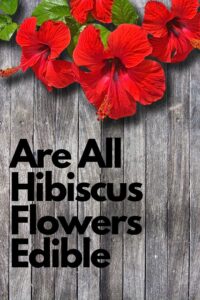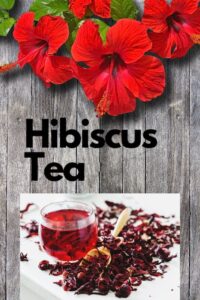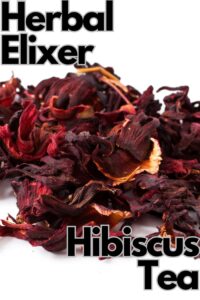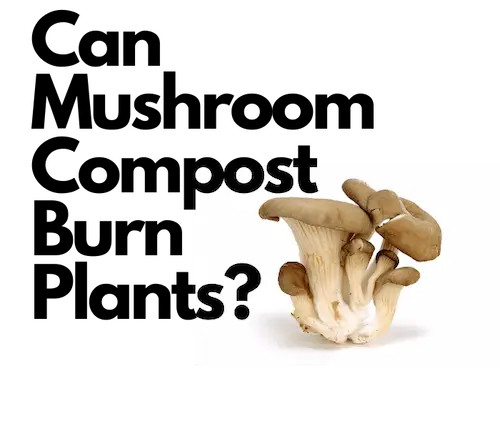Are All Hibiscus Flowers Edible?

Every year, I eagerly anticipate my visit to Costco to purchase hibiscus plants, not just for their stunning beauty but also for the delightful taste of hibiscus tea and its associated health benefits. So yes! All Hibiscus flowers, also some of their young leaves, are edible! While this may not be traditional native plant foraging, Costco provides a convenient avenue for suburban dwellers like myself to access these botanical treasures. With just a trip to the store, I can bring home the vibrant colors of hibiscus blooms and indulge in the aromatic brew of hibiscus tea, all while reaping the nutritional rewards of this versatile plant. Indeed, the accessibility of hibiscus through commercial outlets like Costco underscores the ease with which we can incorporate nature’s bounty into our daily lives, enriching both our surroundings and our well-being.
Hibiscus, with its mesmerizing blooms and rich cultural history, captivates gardeners and enthusiasts worldwide. In this comprehensive guide, we’ll embark on a journey through the fascinating world of hibiscus, from its diverse species to its historical uses and modern-day scientific discoveries.
Description of Hibiscus
Hibiscus, known scientifically as Hibiscus sabdariffa, is a genus of flowering plants belonging to the Malvaceae family. Renowned for its stunning blossoms, the hibiscus plant boasts large, trumpet-shaped flowers that come in a kaleidoscope of vibrant colors, including red, pink, yellow, and white. These flowers typically feature five distinct petals and a prominent central stamen, adding to their visual allure. Cranberry Hibiscus (hibiscus acetosella) is found in East Africa and the young leaves are eaten raw or cooked.
Types of Hibiscus
As I states above tropical hibiscus are available at Costco in the Springtime. The genus Hibiscus, however, encompasses a wide array of species, each with its unique characteristics and attributes. Among the most popular varieties of hibiscus are the tropical hibiscus (Hibiscus rosa-sinensis) and the hardy hibiscus (Hibiscus moscheutos). Tropical hibiscus varieties, often cultivated as ornamental plants, thrive in warm, humid climates and produce large, colorful flowers. In contrast, hardy hibiscus species, also known as swamp or marsh hibiscus, are native to North America and Central America and feature smaller, but equally striking blooms. There are many different species of hibiscus but they all have great medicinal usage! If you can not make it to Costco and don’t have easy access to the plants Hibiscus extract can also be bought online. A small amount or this delicious syrup is packed full of edible hibiscus flowers antioxidants.
Historical Uses of Hibiscus
Throughout history, hibiscus has played a prominent role in various cultures and traditions worldwide. Ancient Egyptians revered hibiscus flowers for their beauty and symbolic significance, often incorporating them into decorative motifs and religious ceremonies. In Chinese culture, hibiscus was valued for its medicinal properties, believed to promote overall health and vitality.
Current Science on Eating Hibiscus
In recent years, scientific research has shed light on the nutritional benefits of consuming hibiscus, particularly its flowers and leaves. Hibiscus flowers, rich in vitamin C and antioxidants, are considered edible and can be used to add color and flavor to a variety of culinary dishes. Similarly, hibiscus leaves, when cooked or steeped, offer a mild, tangy flavor profile that complements both sweet and savory recipes.
Hibiscus Tea: A Herbal Elixir
One of the most popular ways to enjoy the health benefits of hibiscus sabdariffa is through the consumption of hibiscus tea. Made from drying the part of the plant called the flower’s calyx or the flower petals of the hibiscus flower, hibiscus tea boasts a vibrant crimson hue and a refreshing tart flavor. Commonly enjoyed hot or cold, hibiscus tea is prized for its medicinal properties, culinary versatility, and nutritional value. These edible flowers look and taste amazing! Young leaves can also be used in a tea and will have similar health benefits, but less tart citrus flavor and vibrant red color.
Benefits of Hibiscus Tea
Hibiscus tea is renowned for its numerous health benefits, making it a popular choice among health-conscious individuals worldwide. Tea, a main use of hibiscus, is rich in antioxidants, hibiscus tea helps combat oxidative stress and inflammation, thereby supporting overall health and well-being. Additionally, research suggests that regular consumption of hibiscus tea may help lower blood pressure and cholesterol levels, reducing the risk of heart disease and other cardiovascular conditions. Drinking this form of tea can also help with weight loss, high blood pressure, boosting your immune system and even liver damage. All traditional medicine agrees on the benefits of antioxidants and bioactive compounds in our bodies.

Recipe: Homemade Hibiscus Tea
Making your own hibiscus tea at home is a simple and rewarding process. Follow these easy steps to create a refreshing and healthful beverage that you can enjoy any time of day.
Ingredients:
- 1/4 cup dried hibiscus flowers
- 4 cups water
- Optional: sweetener of your choice (such as honey or agave syrup), lemon or lime slices for garnish
Instructions:
- Begin by bringing 4 cups of water to a boil in a medium saucepan.
- Once the water reaches a boil, add the dried hibiscus flowers to the saucepan.
- Reduce the heat to low and let the hibiscus flowers simmer in the water for about 10-15 minutes, allowing the flavors to infuse.
- After simmering, remove the saucepan from the heat and let the tea steep for an additional 5 minutes.
- Strain the tea through a fine-mesh sieve or cheesecloth into a heatproof pitcher or container, discarding the hibiscus flowers.
- If desired, sweeten the tea to taste with your preferred sweetener, stirring until dissolved.
- Allow the tea to cool slightly before serving, either hot or chilled over ice.
- Garnish each serving with a slice of lemon or lime for an extra burst of flavor.
Enjoy your homemade hibiscus tea as a refreshing pick-me-up or as a nutritious beverage to accompany any meal. Adjust the sweetness and acidity to suit your personal taste preferences, and feel free to experiment with additional flavorings such as mint or ginger for a unique twist on this classic herbal infusion.
Conclusion
In conclusion, the hibiscus plant stands as a symbol of beauty, vitality, and cultural significance. From its dazzling blooms to its culinary and medicinal uses, hibiscus continues to captivate and inspire people around the globe. Whether enjoyed as a fragrant addition to the garden, a flavorful ingredient in culinary creations, or a health-promoting herbal tea, hibiscus leaves an indelible impression on those who encounter its botanical splendor. I will continue to purchase tropical hibiscus from Costco, I believe the benefits of having it in the house outweigh the issues presented with sustainability. I attempt to keep the same plant alive for many seasons by bringing it indoors over the winter and we enjoy the health benefits year-round from the dried flowers.
 Hibiscus tea can be made from drying your own flowers at home or by purchasing the tea online (click for the best price on amazon)
Hibiscus tea can be made from drying your own flowers at home or by purchasing the tea online (click for the best price on amazon)
